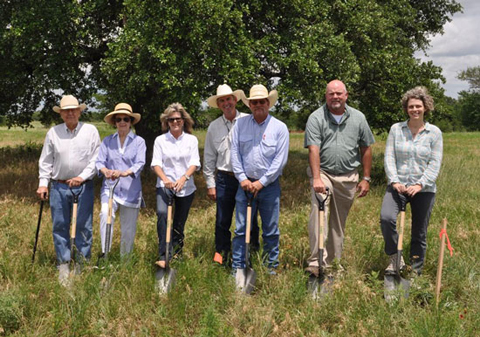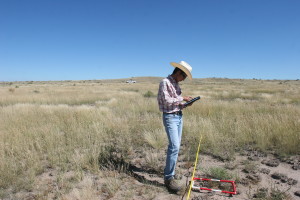
From left to right: Dixon Water Foundation Vice President Clint Josey and wife Betty Josey; Melissa Bookhout, the foundation’s treasurer and office manager; Robert Potts, the foundation’s president and CEO; Robby Tuggle, ranch foreman; Greg Gammill, president of Lincoln Builders; and Tenna Florian, Lake|Flato architect.
DECATUR, MARFA–The Dixon Water Foundation broke ground on June 17 on the Betty and Clint Josey Pavilion, which aspires to be the first “Living Building” in Texas.
The 5,000-square-foot pavilion will be a site for meetings and educational events at the Dixon Ranches Leo Unit in Cooke County. Lake|Flato architects of San Antonio have designed the facility to meet the Living Building Challenge, the most rigorous international green-building certification. Construction is expected to finish later this year.
To meet the standard, the pavilion will generate all of its own clean, renewable energy and capture and treat its own water. Building materials will be non-toxic and sourced responsibly and as locally as possible.
The Living Building Challenge is a natural fit for the Dixon Water Foundation’s mission of promoting healthy watersheds through sustainable land management. The Leo Unit is one of four Dixon Ranches where the foundation demonstrates environmentally and economically sound ways to manage rangeland. The foundation’s other ranches are in Cooke and Parker counties and Marfa, Texas.
The pavilion is named after Clint Josey, the foundation’s vice-president and board chairman, and his wife, Betty. As landowners, the Joseys have been advocates of holistic land management for 30 years.
Click here for a PDF of this press release.


